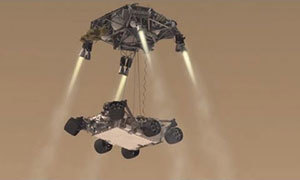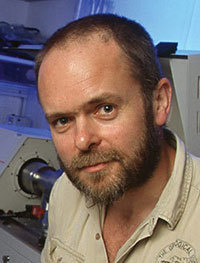
Curiosity, NASA’s newest Mars rover, is slated to touch down on the surface of the Red Planet early Monday (Aug. 6), at 1:31 a.m. EDT.
The rover is the heart of NASA’s $2.5-billion Mars Science Laboratory (MSL) mission, which will try to determine if Mars is, or ever was, capable of supporting microbial life.
Clive Neal, a University of Notre Dame planetary geologist, views the mission as a critical one for NASA.
“The Mars Science Lab mission is groundbreaking in that it will be the first to use a ‘sky crane’ to deploy a large, automobile-sized payload to the surface of another planet,” Neal said. “Unfortunately, the mission was plagued by delays and large cost overruns, but given the nature of the new technology being developed, this should have been expected. Given the stress that NASA’s budget is currently under, a successful MSL mission will be needed in order to show Congress and the president that NASA is still the world leader in planetary exploration.”
Curiosity was launched by NASA on Nov. 26, 2011. The six-wheeled rover is equipped with 10 science instruments and a wealth of high-tech camera gear. It will land beside Mount Sharp in the Gale Crater because scientists believe they will find water there.

“The mission is well-equipped to look for organic molecules in a sequence of geology that has been defined from orbital data to be the most appropriate to preserve them, if they were ever present,” Neal said. “This is much better than the Viking landers of the 1970s, which did not have the orbital data to guide the landers to the most likely geology that would have preserved organic life.
“If the mission is a success or a failure, it will impact NASA and planetary exploration.”
Neal is a member and former chair of NASA’s Lunar Exploration Analysis Group, which is responsible for analyzing scientific, technical, commercial and operational issues associated with lunar exploration. The group provides findings from these analyses to NASA through the NASA Advisory Council.
He also is a member of NASA’s Lunar Science Institute, which is a select team of scientists tasked with growing the nation’s technical capabilities in lunar science and developing educational opportunities in space science.
Contact: Clive Neal, Clive.R.Neal.1@nd.edu
Originally published by at newsinfo.nd.edu on August 03, 2012.